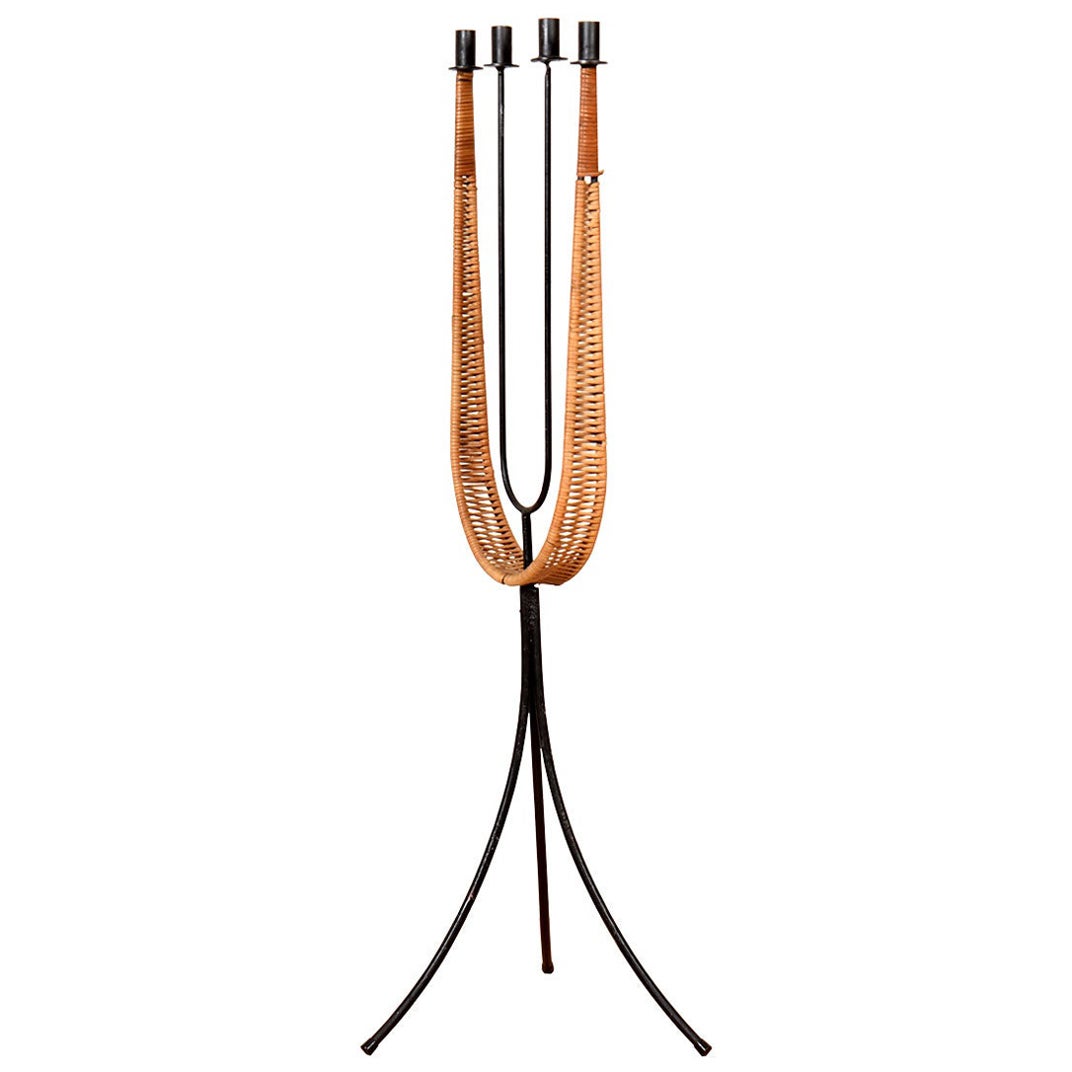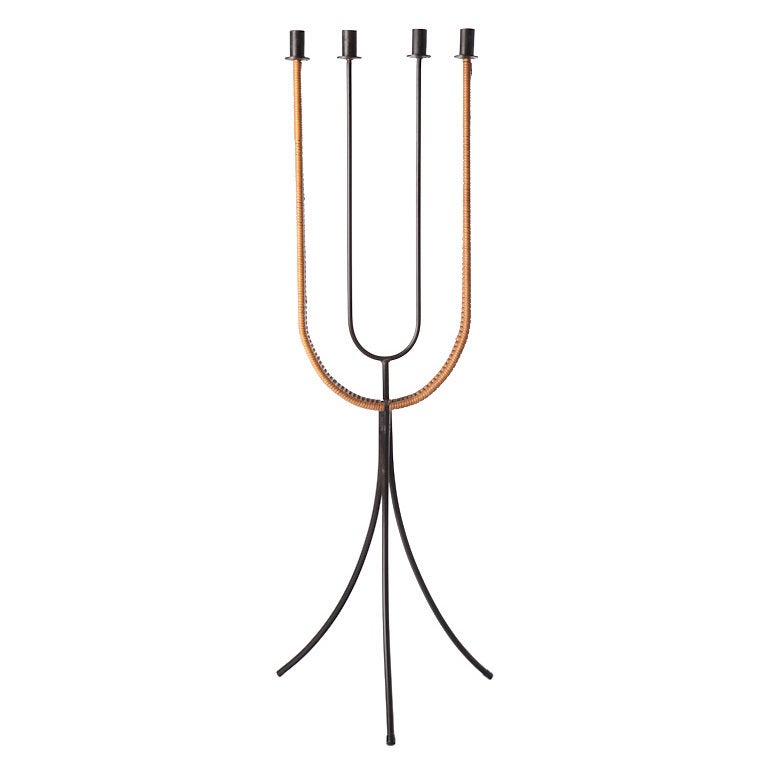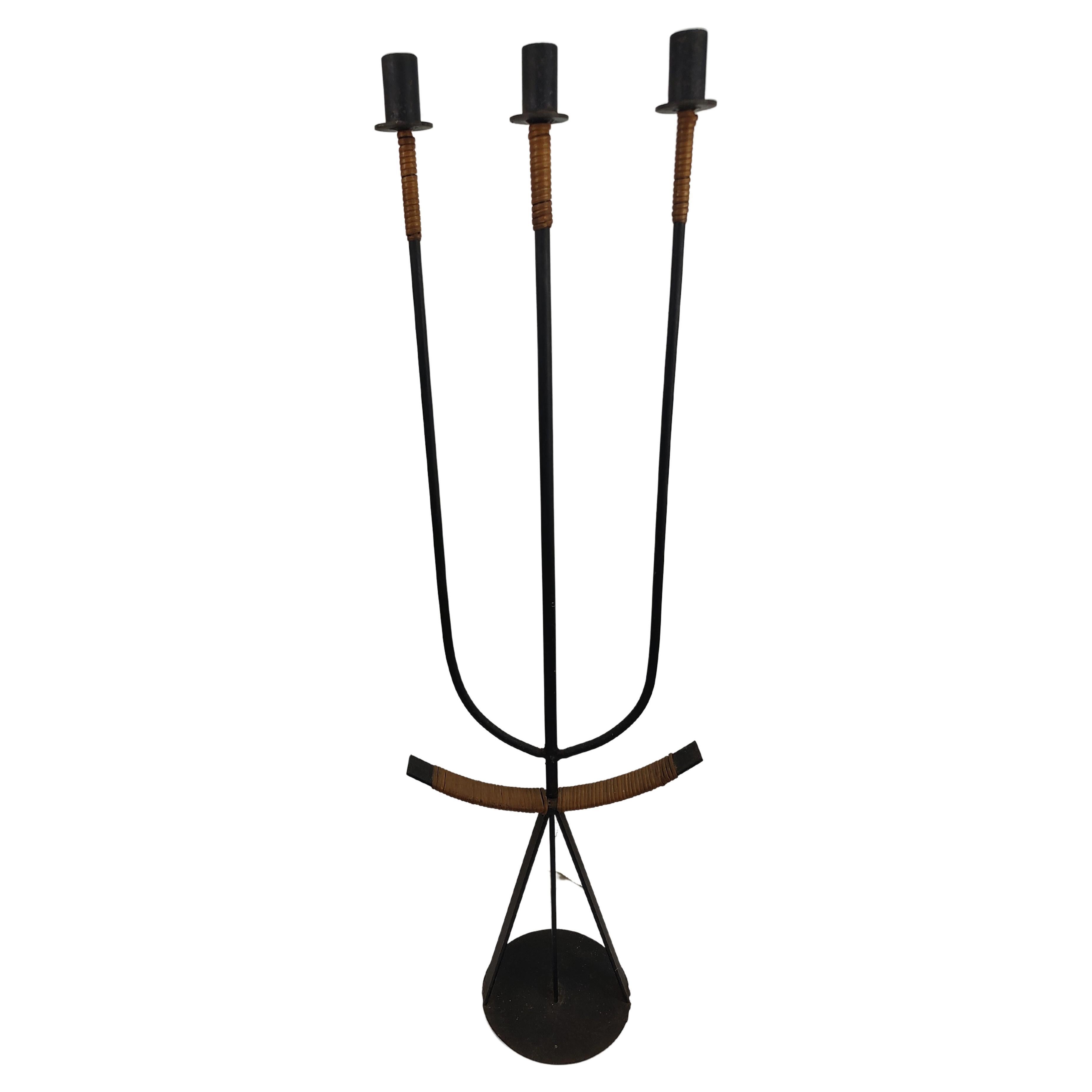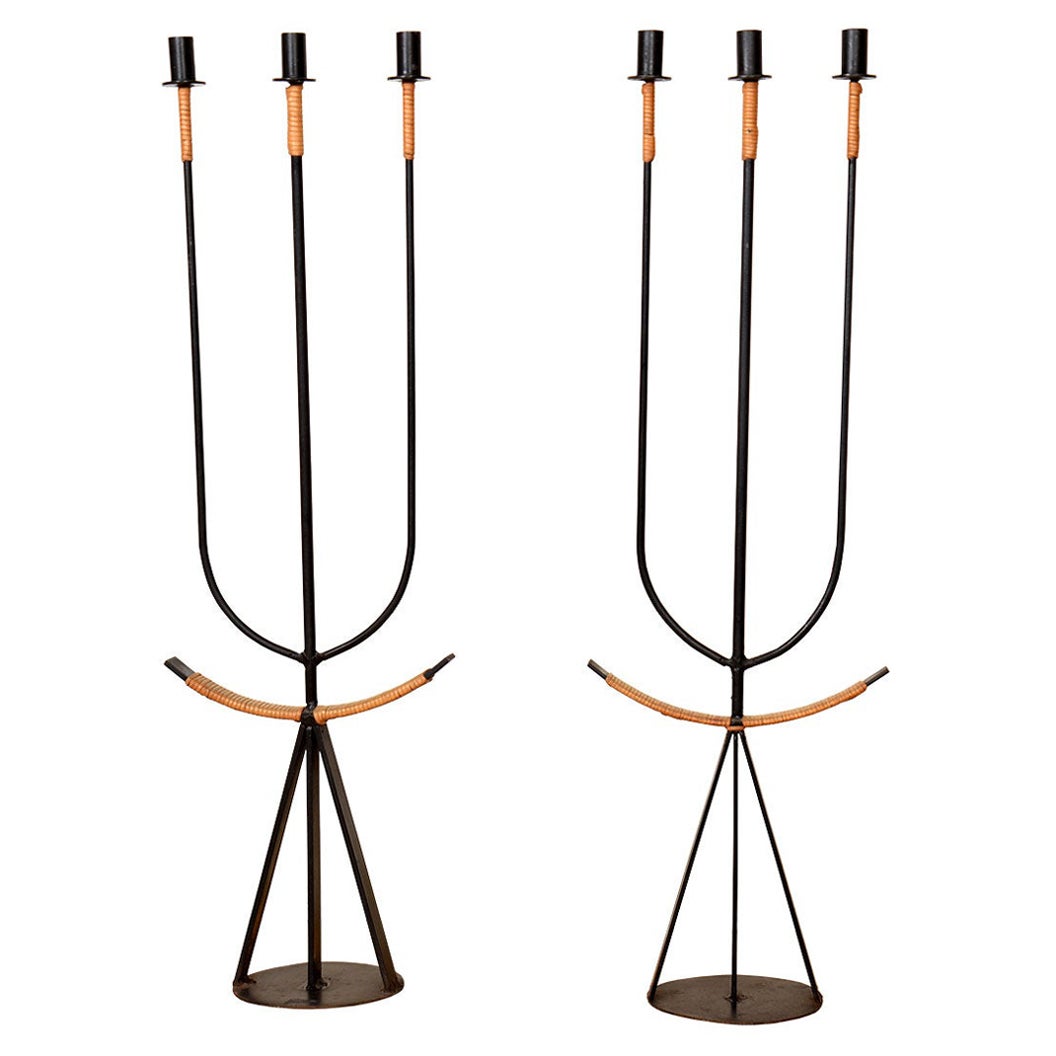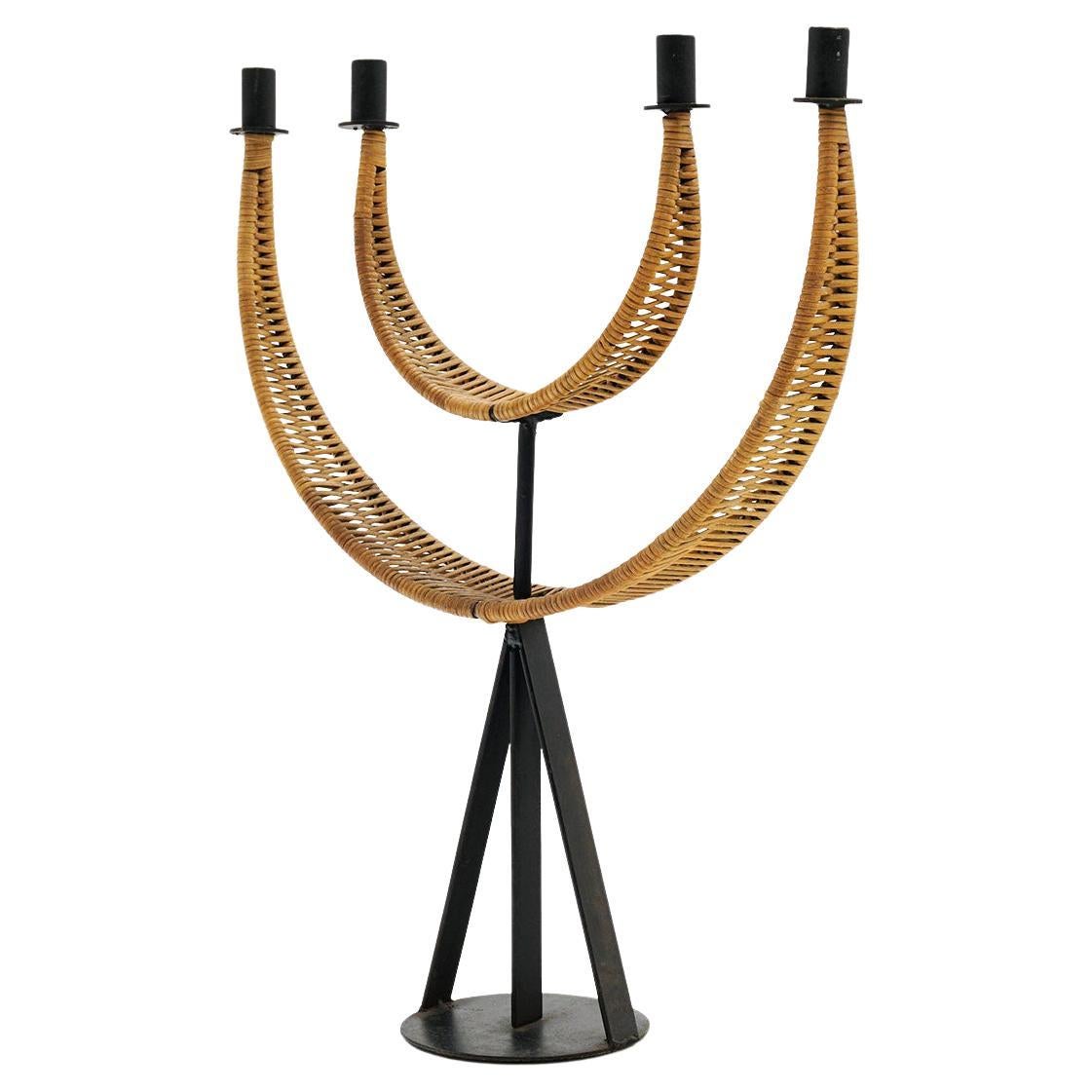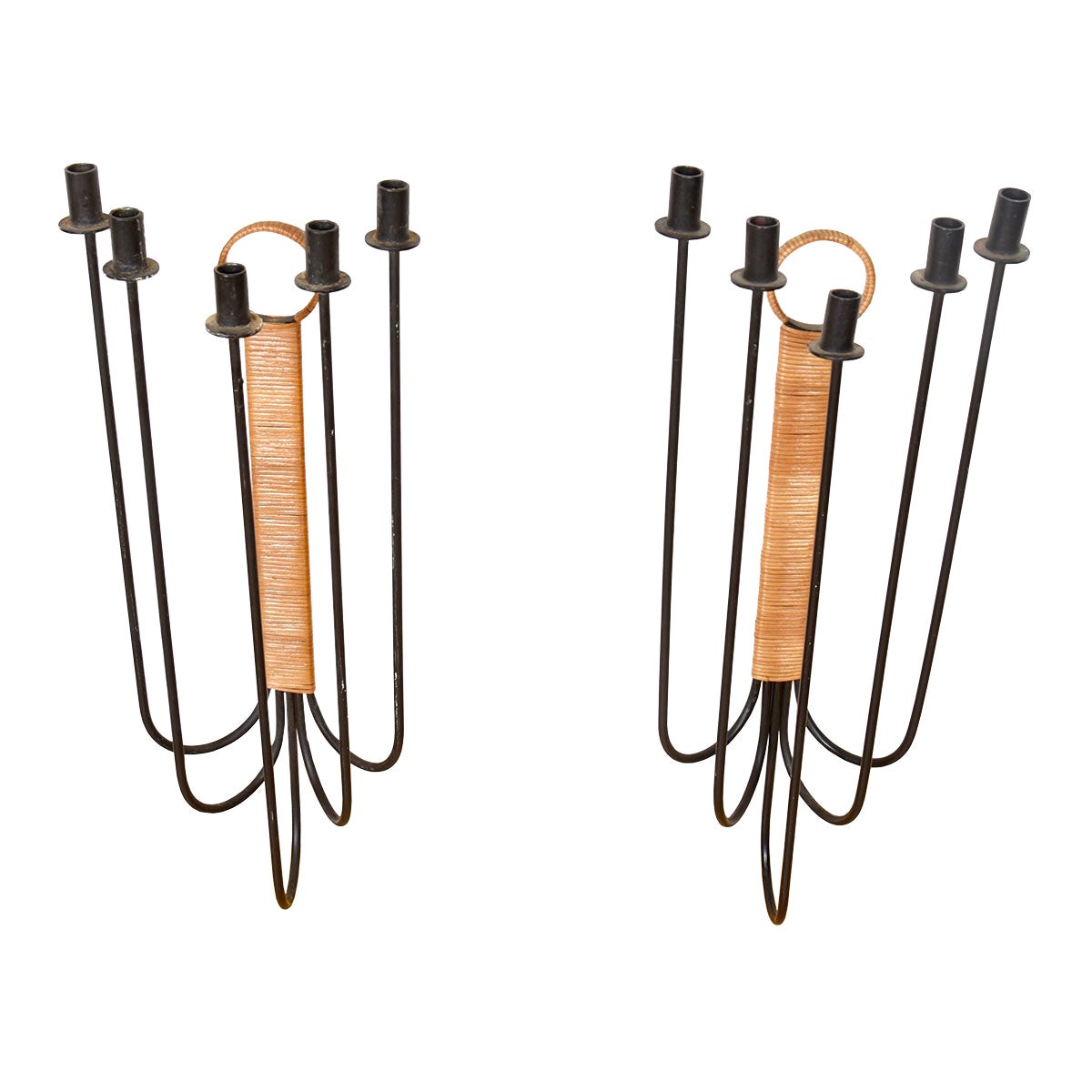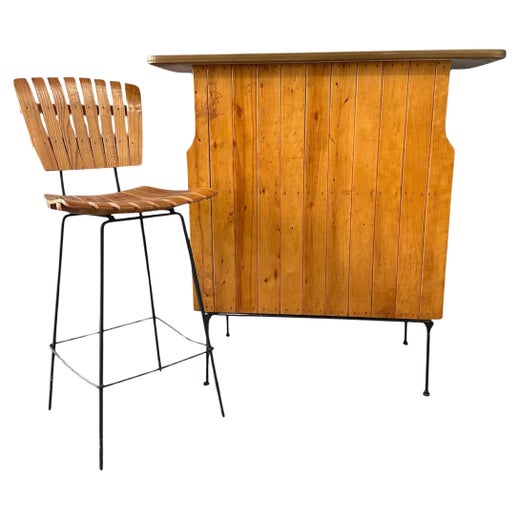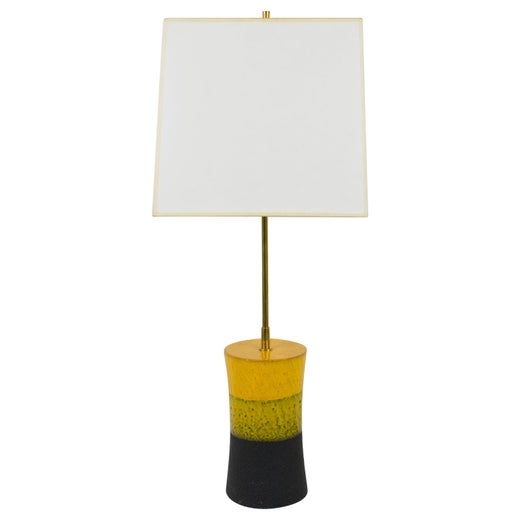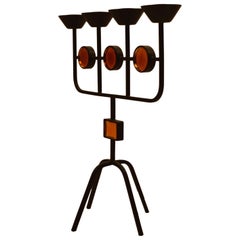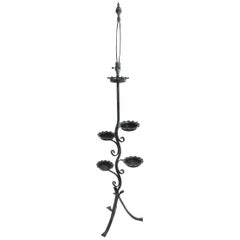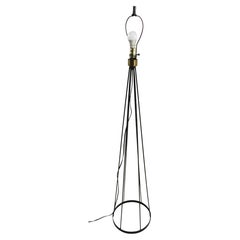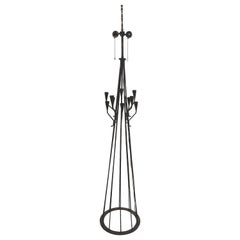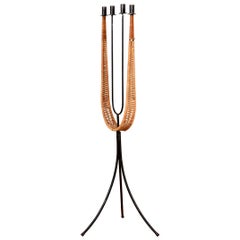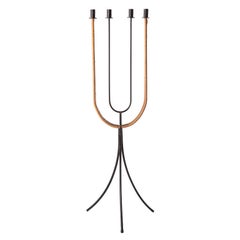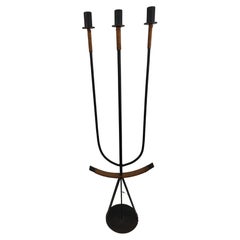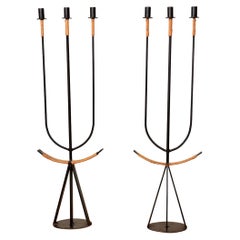Mid Century Wrought Iron and Rattan Candlestick by Umanoff for Raymor c 1950s
About the Item
- Creator:Raymor (Retailer),Arthur Umanoff (Designer)
- Dimensions:Height: 48 in (121.92 cm)Width: 17 in (43.18 cm)Depth: 16 in (40.64 cm)
- Style:Mid-Century Modern (Of the Period)
- Materials and Techniques:
- Place of Origin:
- Period:
- Date of Manufacture:1950s
- Condition:Wear consistent with age and use. Exceptional original, clean and ready to use condition, showing only light cosmetic wear, normal and consistent with age.
- Seller Location:New York, NY
- Reference Number:1stDibs: LU978734356332
Arthur Umanoff
Though much of Arthur Umanoff's furniture is marked by a no-frills simplicity common in American mid-century modern design, his work is anything but one-note. Over the course of a prolific career, Umanoff designed everything from case pieces to candleholders to magazine racks to dining chairs in iron, leather, walnut, wicker and more. With furnishings for a broad range of manufacturers throughout the ’50s, ’60s, ’70s and early ’80s, Umanoff continued a thread of sculptural elegance and textural sensitivity through his designs.
After graduating from Pratt Institute in the early 1950s, Umanoff experimented mostly with wood furniture before landing a job at Post Modern Ltd, a New York manufacturer of wrought-iron furniture. There he produced furnishings that married wrought iron with wood and plastic, creating functional pieces free of utilitarian bulkiness.
Umanoff continued his experimentation with mixed materials through a partnership with Shaver Howard, for whom he designed wine racks in combinations of iron, leather and wicker.
When Shaver Howard bought Boyeur Scott, Umanoff conceived several furniture designs for the brand, including the 1964 Granada collection, whose curlicue iron bases, visible through glass tops, stand out as some of his most ornate and decorative work. Indeed, much of Umanoff’s oeuvre is far more simplistic, like iron-and-pine armchairs for The Elton Co. or low-backed, slatted-seat barstools with slender iron legs for Raymor.
Umanoff was fluent, too, in the more sumptuous modernism of the era: In the mid-1960s, he designed the 2405 and 4449 armchairs for Madison Furniture Industries. Popular in offices, the walnut-framed, leather-upholstered seats, which could have been mistaken for the seductive Scandinavian modern seating of the era, were reportedly the jumping-off point for Captain Kirk’s iconic seat on Star Trek.
Even as he is among the mid-century modern designers you may not know, with work across such a range of styles and manufacturers (most no longer in business), Umanoff, who died in 1985, leaves a legacy that is fascinatingly diverse and at times enticingly elusive, making his work intriguing objects for collectors.
Find vintage Arthur Umanoff bar stools, tables, benches and other furniture today on 1stDibs.
Raymor
Few had their finger on the pulse of American furniture like importer and distributor Raymor. Founder Irving Richards first had his eyes opened to the world of furniture while attending the 1928 Salon d’Automne art and design fair in Paris. He joined Lightolier two years later and developed its business relationships, including with designer Russel Wright.
Wright and Richards met in 1935 and Russel Wright, Inc. was formed in 1936. Its American Modern ceramic tableware, produced under the name Wright Accessories in 1938, was a notably lucrative collaboration. Following the early success of American Modern, Richards obtained the majority share of Wright Accessories and changed its name to Raymor Mfg Division Inc. in 1941.
By 1952, the exclusivity over American Modern had ended (the line was initially produced by Wright Associates and later manufactured by Steubenville for two decades). To keep up with American markets, Raymor worked with prominent designers such as George Nelson, Arthur Umanoff, Ray and Charles Eames, and Hans J. Wegner.
The company’s imports expanded to Denmark, which contributed to the rise of Scandinavian modern designs in the American market. Throughout the 1950s, Richards established relationships with factories in Scandinavia, Italy and Germany, as well as with the influential tastemaker and importer Charles Stendig.
The furniture company Simmons bought Raymor in 1963 and changed its name to Raymor Richards, Morgenthau Inc. in 1969. During that time, Raymor’s Omnibus range of Scandinavian-style wall units became widely popular, along with Italian glass and pottery like Bitossi ceramics designed by Aldo Londi and Bagni ceramics by Alvino Bagni.
Shifting styles coupled with rising competition, and the departure of Richards from the company, ended Raymor. By the late 1970s, Raymor faced a wave of international factories able to produce similar products of lesser quality for a lower cost. Buyers were eager to frequently change their interior styles, limiting the need for high-end, durable furniture, which Raymor had been importing.
On 1stDibs, find a collection of vintage Raymor ceramics, lamps, decorative objects and more.
- ShippingRetrieving quote...Shipping from: Albany, NY
- Return Policy
More From This Seller
View AllVintage 1960s Swedish Mid-Century Modern Candelabras
Metal
Mid-20th Century American Mid-Century Modern Floor Lamps
Iron
Mid-20th Century American Mid-Century Modern Floor Lamps
Wrought Iron
Mid-20th Century Portuguese Brutalist Floor Lamps
Wrought Iron
Mid-20th Century French Hollywood Regency Floor Lamps
Brass
Mid-20th Century American Mid-Century Modern Planters and Jardinieres
Wrought Iron
You May Also Like
Mid-20th Century Mid-Century Modern Candelabras
Iron
20th Century American Mid-Century Modern Candle Holders
Wrought Iron
Vintage 1960s American Mid-Century Modern Candelabras
Iron
Mid-20th Century American Mid-Century Modern Candelabras
Iron
Vintage 1950s American Mid-Century Modern Candelabras
Iron
Mid-20th Century American Mid-Century Modern Candelabras
Iron
